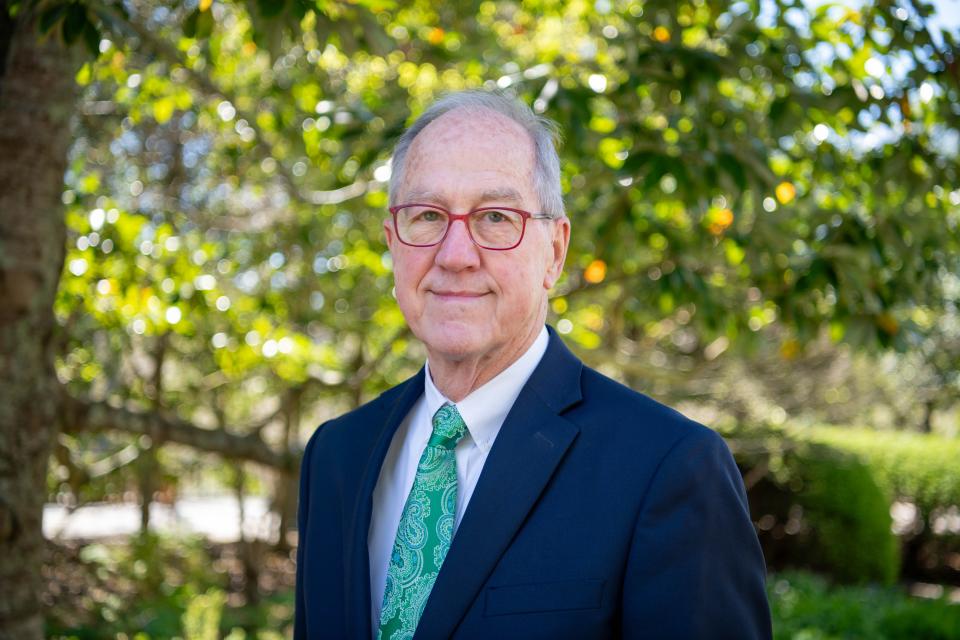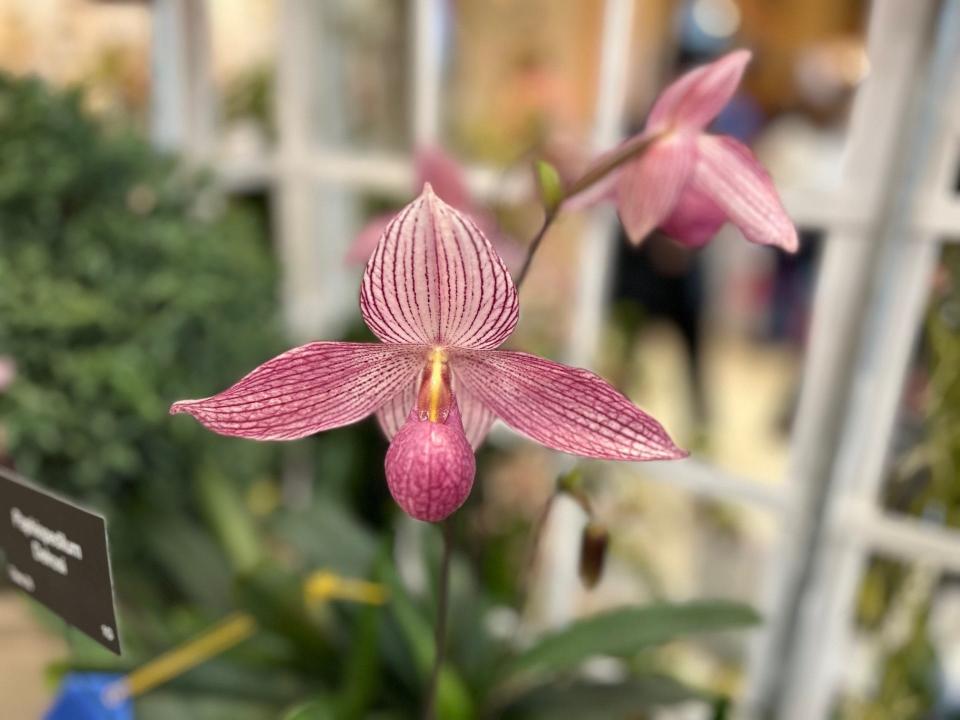North Carolina Arboretum founding director George Briggs to retire after 37 years
Editor's note: This story has been updated with comments from George Briggs.
ASHEVILLE - A celebrated leader in botany has announced his departure from The North Carolina Arboretum after more than three decades of service.
Effective Aug. 1, founding director George Briggs will retire from the arboretum, ending a 37-year career.
Briggs is credited with creating The Arboretum at 100 Frederick Law Olmsted Way in Asheville, reported as one of five affiliate institutions within the 17-campus University of North Carolina System.
"As a small-town guy from Reidsville, North Carolina, who has been able to build an institution from scratch as part of one of the strongest university systems in the world, located in my home state, it just doesn't get much better than that in looking back on a career," Briggs told Citizen Times on April 15.
"I've been honored and appreciative of the opportunity to tackle this challenge and to feel good about leaving it at this point in my life."

The late UNC President C. D. Spangler appointed Briggs, who has since reported to seven university system presidents.
“In the arboretum world, George Briggs is a pioneer species. He’s been breaking new ground and seeding grand ideas at the North Carolina Arboretum for 37 years, growing its impact in education, research, and conservation,” UNC System President Peter Hans said in an April 13 news release. “George’s patient vision has made the Arboretum a true gem for the UNC System and the state of North Carolina.”
The announcement of Briggs' retirement came amid the 23rd annual Western North Carolina Orchid Society's Asheville Orchid Festival, taking place April 13-14 at the N.C. Arboretum.

'Internationally acclaimed place of beauty'
As executive director, Briggs oversees a $10 million budget. His accomplishments have included “the initiation of several economic development initiatives focused on building Asheville’s climate science and business sector, the natural products economy in North Carolina, and stewardship of the managed landscape,” according to the arboretum's news release.
In 1987, Briggs attended his first public event during which 429 acres of the Bent Creek Experimental Forest of the Pisgah National Forest, established by the North Carolina General Assembly in 1986, was designated for the arboretum in the memorandum of understanding signed by the governor and U. S. Forest Service officials.
The arboretum reported that it serves more than 600,000 annual visitors and 100,000 students throughout North Carolina and garners support from more than 20,000 household memberships as Western North Carolina’s major state-supported attraction.
“In creating The North Carolina Arboretum, George Briggs has brought to Western North Carolina an internationally acclaimed place of beauty, creativity, learning and economic opportunity,” Cheryl McMurry Kaynard, chair of the arboretum's board of directors, said in a news release.
“The profound and inspiring impact of George’s leadership skills, his exceptional intelligence and character, and his insistence on truly excellent results are on display every day at the Arboretum and are seen, experienced and valued by everyone who has worked with George over the years.”

Formerly, Briggs served as professor of horticulture at Virginia Tech, executive director of the Nebraska Statewide Arboretum at the University of Nebraska-Lincoln and president of the American Public Gardens Association.
According to the arboretum, Briggs founded and chaired the first World Congress of Botanical Gardens held in Asheville that “ratified an inaugural policy framework for plant conservation in public gardens worldwide.”
Briggs said the event, which occurred in 2000, required 11 years of work and involved 30 international associations of public gardens. He said it's been adopted formerly by more than 500 gardens worldwide.
Briggs, who’s been instrumental in the growth of the craft, green industry and tourism economy, has served on numerous state and national boards with long tenures on the N.C. Plant Conservation Board and the North Carolina Biotechnology Center Board.
He was recognized by the N.C. Office of State Construction for Excellence in the Built Environment and induction into the Council of Fellows of the American Society of Landscape Architects.
In March, Newsweek magazine recognized the arboretum as America’s best botanical garden, which the organization said was “a reflection of the Arboretum’s two visionary boards, 150 dedicated staff and 350 committed volunteers.”
The arboretum possesses the only full-figure sculpture of Frederick Law Olmsted, known as "the father of American landscape architecture," which was initiated by his descendants.
Briggs said he's proud to have manifested at the arboretum one of Olmsted's dreams that he couldn't complete before his death.
"When I came here, the arboretum was an entirely new concept for this area but what people didn't realize is that when Frederick Law Olmsted came here and did the landscape architecture for Biltmore Estate, he had a dream of building the world's finest research arboretum as part of the Biltmore," Briggs said.
"That's one of the things that's been a real pleasure. As a landscape architect to be able to ... help fulfill the one dream that Olmsted was never able to complete near the end of his life," he said.
Retirement and succession plans
Briggs said he and the board have been working on a strategic succession plan since 2013, though the work to strengthen the arboretum for his departure has been ongoing since he began in 1987. He said he wanted to retire when the arboretum was strong.
"I've long had a philosophy that transitions like this, if you design them well and you treat them positively, they can be times when you can do things that you can't do other times. You can change functions and positions or you change emphasis in your staff, and that sort of thing," Briggs said.
He said by early June, people working in five key positions will have retired, not including himself.
The nonprofit North Carolina Arboretum Society provides resources to the establishment, which is governed by a 19-member board, UNC and state leader-appointed members with oversight by UNC.
"We have a positive culture at the arboretum right now and a lot of momentum going forward," said Briggs, who noted the Winter Lights and Asheville Orchid Festival events among recent successes and expressed optimism for Bloom with a View and Bonsai Exhibition Garden this spring.
"Everything right now is at a crest where I feel comfortable handing off the arboretum to the next leader in a very positive way," he said.
The new executive director, which will be decided by the UNC System Office, has not been announced. Briggs said he will continue to be a cheerleader for the arboretum.
Post-retirement, Briggs said he plans to spend time with his wife and retired art teacher, Sara, and their new rescue puppy, Hope.
"I've had three dreams to be filled and Sara has followed me around the country. She's been my greatest support, my greatest rock, and what I want to do now is determine what it is that she would like to do and I'm going to be her enabler in any way I can to help her do that."
Stories you may have missed:
Hundreds of orchids on display at NC Arboretum's Asheville Orchid Festival
Asheville's NC Arboretum drew crowds for prime solar eclipse viewing
'Chihuly at Biltmore' art exhibit opens with glass chandeliers, more at historic estate
Tiana Kennell is the food and dining reporter for the Asheville Citizen Times, part of the USA Today Network. Email her at [email protected] or follow her on Instagram @PrincessOfPage. Please support this type of journalism with a subscription to the Citizen Times.
This article originally appeared on Asheville Citizen Times: North Carolina Arboretum founding director George Briggs to retire after 37 years
